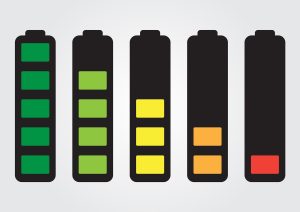As technology continues to advance, batteries play an increasingly vital role in our lives. From powering our smartphones and laptops to providing energy storage for renewable sources, batteries are an essential component of modern life. However, just like any other device, batteries can experience wear and tear over time, resulting in a decrease in their performance and efficiency. One of the key indicators of battery health and efficiency is its specific gravity.

Monitoring the specific gravity of a battery can help determine its health and predict its remaining lifespan. By regularly measuring the specific gravity, battery users can identify potential issues early on and take corrective actions, such as desulfating or equalizing the battery, to extend its life. If you are interested in specific gravity in lead acid batteries, check this out to discuss your specific requirements pertaining to specific gravity monitoring.
What is Specific Gravity?
Specific gravity is a measure of the density of a substance compared to the density of a reference substance, usually water. It is expressed as a ratio or a number, and it provides valuable information about the composition and condition of a battery’s electrolyte solution. In the case of batteries, the electrolyte solution is typically sulfuric acid, which reacts with the battery’s lead plates to produce electrical energy.
Why is Specific Gravity Important?
Specific gravity serves as a key indicator of battery health and efficiency for several reasons. First, it provides insight into the state of charge of a battery. By measuring the specific gravity of the electrolyte solution, you can determine whether the battery is fully charged, partially charged, or discharged. This information is crucial for assessing the remaining capacity of the battery and estimating its runtime.
Additionally, specific gravity can also indicate the overall health of the battery. As a battery ages or becomes damaged, the specific gravity of the electrolyte solution may change. A significant decrease in specific gravity could suggest that the battery is losing its ability to hold a charge effectively and may be nearing the end of its lifespan.
Furthermore, specific gravity can help identify potential issues with the battery’s internal components. For example, if the specific gravity readings are inconsistent between different cells within a battery, it may indicate that there is an imbalance or malfunction within the battery’s internal structure. This knowledge allows for timely maintenance or replacement of the affected cells, preventing further damage to the battery and ensuring its efficiency.
Overall, monitoring the specific gravity of a battery provides valuable information about its state of charge, remaining capacity, overall health, and potential issues. By regularly measuring and analyzing specific gravity, battery users can make informed decisions regarding maintenance, replacement, and optimizing battery performance, ultimately extending its lifespan and ensuring reliable operation.
How to Measure Specific Gravity?
Measuring the specific gravity of a battery’s electrolyte solution is a relatively simple process that can be done using a hydrometer or a refractometer. A hydrometer is a glass tube with a weighted bulb at one end that measures the density of the electrolyte solution. A refractometer, on the other hand, measures the refractive index of the solution, which is directly related to its specific gravity.
To measure the specific gravity of a battery’s electrolyte solution using a hydrometer, you simply need to draw a sample of the solution into the hydrometer and observe where the liquid level falls on the scale inside the tube. The scale is typically marked in units of specific gravity, allowing you to read the value directly. A higher specific gravity indicates a denser solution, while a lower specific gravity indicates a less dense solution.
Using a refractometer to measure specific gravity involves placing a drop of the electrolyte solution onto the prism of the refractometer and looking through the eyepiece. The refractometer will display a numerical value corresponding to the refractive index of the solution. This value can then be converted to specific gravity using a conversion chart or calculator.
Both methods provide a convenient way to assess the state of a battery’s electrolyte solution. By regularly measuring the specific gravity, you can monitor the health and performance of the battery. A significant deviation from the recommended specific gravity range may indicate that the battery needs attention, such as adding distilled water or charging the battery.
Interpreting Specific Gravity Readings
Interpreting specific gravity readings requires an understanding of the battery’s specific gravity range and the temperature compensation factor. The specific gravity range varies depending on the type of battery, such as lead-acid or lithium-ion. Consult the manufacturer’s specifications or guidelines for the specific gravity range of your battery.
Maintaining Battery Health and Efficiency
To maintain battery health and efficiency, regular monitoring of specific gravity is essential. By tracking specific gravity measurements over time, you can identify any deviations from the expected range and take appropriate actions to address them. Here are some tips for maintaining battery health:
- Regularly check the specific gravity of your battery using a hydrometer or a battery tester. This will help you track any changes in the electrolyte concentration and the overall condition of the battery.
- Keep an eye on the specific gravity readings over time. A gradual decrease in specific gravity may indicate a loss of capacity or sulfation, which is the buildup of lead sulfate on the battery plates. If you notice a significant drop in specific gravity, it may be time to perform maintenance or consider replacing the battery.
- Maintain proper charging and discharging practices. Overcharging or undercharging can affect the specific gravity readings and lead to battery damage. Follow the manufacturer’s guidelines for charging and avoid deep discharges whenever possible.
- Clean the battery terminals regularly to prevent corrosion. Corrosion can interfere with the battery’s performance and affect the specific gravity readings. Use a mixture of baking soda and water to clean the terminals and ensure a good connection.
- Avoid exposing the battery to extreme temperatures. High temperatures can cause the electrolyte to evaporate and lead to a decrease in specific gravity. On the other hand, freezing temperatures can damage the battery plates. Store the battery in a cool and dry place to maintain its health.
- If you’re experiencing frequent low specific gravity readings, consider equalizing the battery. Equalizing is a controlled overcharge process that helps remove sulfation and restore the battery’s capacity. Consult the manufacturer’s instructions or seek professional help before attempting this procedure.
- Monitor the specific gravity readings after performing any maintenance or equalization. This will help you determine if the maintenance has improved the battery’s condition or if further action is required.
Remember, maintaining battery health is crucial for optimum performance and longevity. By regularly monitoring specific gravity and following proper maintenance practices, you can ensure that your battery continues to operate efficiently.
Conclusion
Specific gravity is a key indicator of battery health and efficiency. By monitoring the specific gravity of a battery’s electrolyte solution, you can assess its state of charge, identify potential problems, and maintain its overall performance. Regular specific gravity measurements, along with proper maintenance and care, can prolong the lifespan of batteries and ensure their optimal performance in various applications.







